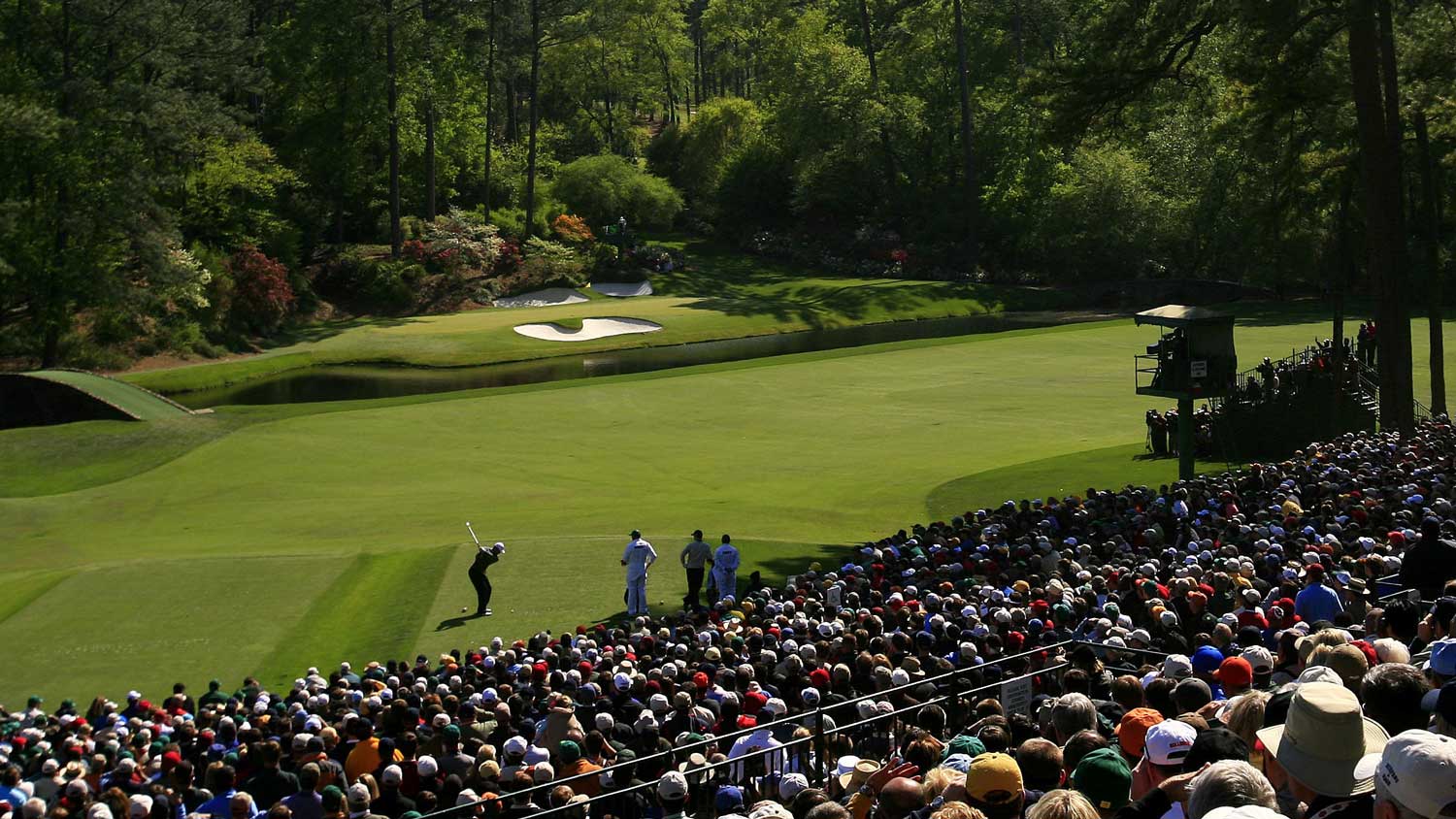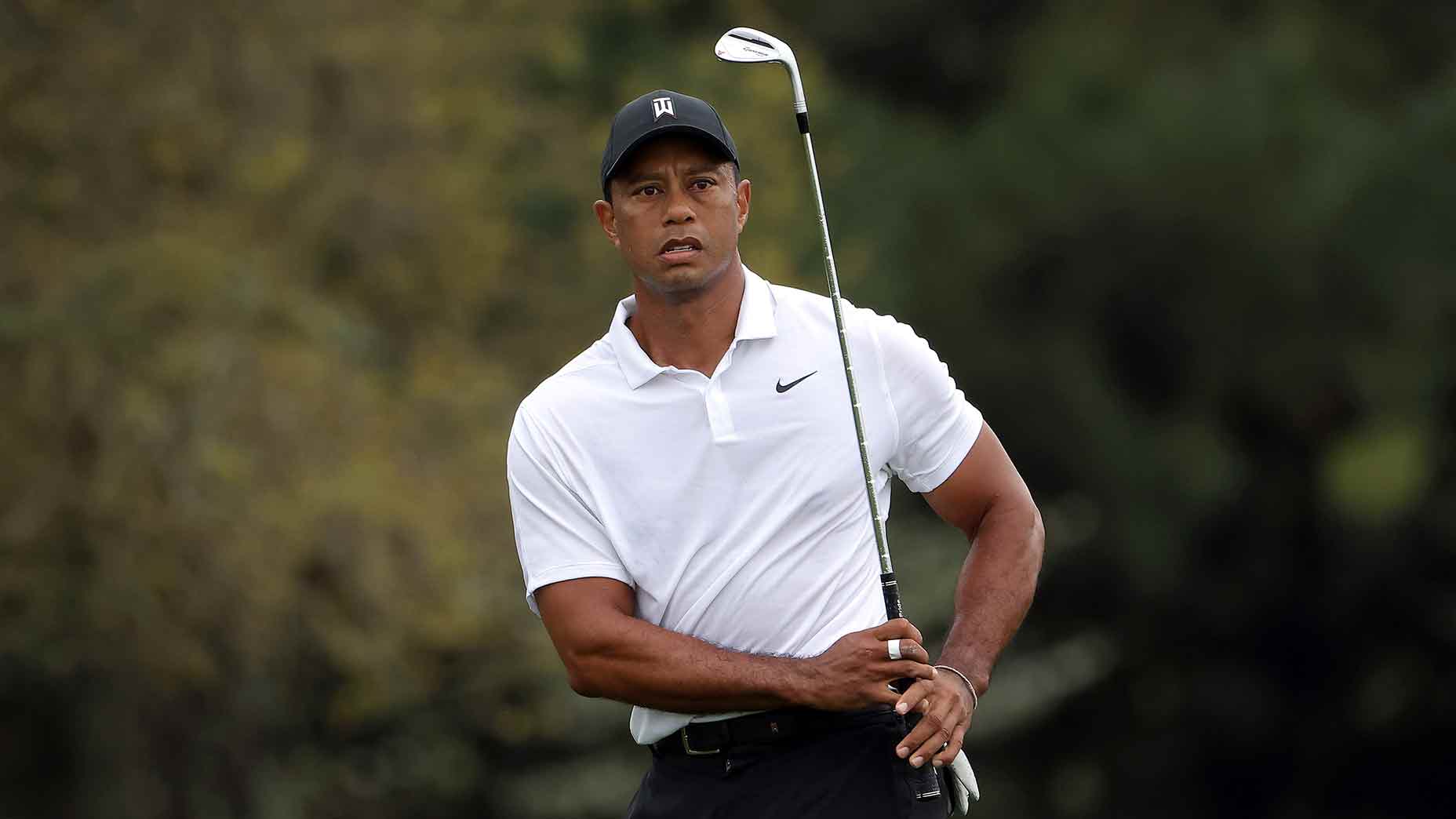
The Eisenhower Cabin is one of many accommodation options at Augusta National.
getty images
Ed. note: Just as Augusta National is the ultimate insiders’ club, the Masters is the ultimate insiders’ tournament. Nearly nine decades after the storied venue was founded, the Augusta Experience has remained shrouded in mystery. To unlock some of its secrets, we asked those who have been part of the experience to describe one element of what makes Augusta Augusta and the Masters the Masters. The sixth installment of our “What It’s Like…” series (below) was contributed by GOLF‘s Michael Bamberger.
Previous installments: Hitting the media lottery | Hosting the Champions Dinner | Being a Masters rookie | Sinking green-jacket dreams at 12 | Working on the Masters grounds crew | Staying in the Crow’s Nest | Hitting a ceremonial opening tee shot
***
My first trip to Augusta was to play the course. I was a working-class baseball writer with a connected friend who wasn’t in the mob. I flew from Philadelphia through a storm at night and in private jet. One pilot. One other passenger, smoking with his left hand and drinking with his right. It was terrifying.
We landed in sleepy Daniel Field in Augusta, a gent loaded our stuff in a green club van and feelings of peace washed over your correspondent.
We stayed in California Cottage, along the 10th hole. You could call the club’s front desk and ask to watch any Masters you wished on your bedroom TV. This was before YouTube and before Golf Channel, so you were seeing things you hadn’t seen before. I fell asleep watching the ’58 Masters, Arnold’s first win. The course, in black-and-white, had rough spots. Arnold’s swing was a blur. The ads featured a man in a suit talking right at you.
The next morning, I saw the club as I had never seen it before.
This was 30 or so years ago. When I went to lift my golf bag, a caddie in his white jumpsuit went running to bag, to beat me to it. All the caddies were Black, as were all the waiters and barmen and housekeepers, at least the ones I saw. All the members and guests that I saw were white, as was the pro-shop staff.
At dinner that night — coat-and-tie, of course — I wore a white shirt. I was told not to wear a striped shirt. I don’t know why but when I looked around the dining room I saw nobody in a striped shirt.
But the joys from our two-day visit are the most powerful memory.
The driving range in those days was small and charming. The grass was short and perfect. The lies were tight. The silent caddies had satchels of grass seed and dirt hanging over their shoulder and on their chests.
The course was unspeakably alive, so green and fresh. Eternal spring. From the tee, on one tee shot after another, there was almost nothing to aim at. Driver in hand, there were no trees to worry about, and no rough. All you saw was a wide carpet of green.
The course was wider than it was long, so it seemed you could wail away. Getting on the greens or near the greens in regulation was not hard. Getting the ball in the bottom of the hole was impossible. Two chips and three putts per hole yields many triples. Happy triples.
We played the nine-hole par-3 course. At the Masters, players routinely go around in in 23 or 24 or 25 shots. I recall needing about two sleeves of balls. There’s water in play on your tee shots, and on your chip shots. It’s spectacular.
The whole place was spectacular, but I’m happy to say it’s better now. Among many other things, nobody looks at you twice if you’re wearing a striped shirt in the clubhouse.
The tee shots, though, have become much harder. All those new trees. I don’t see them, in my mind’s eye. I shut my lids and see a course that’s wide and green and inviting.
Michael Bamberger welcomes your comments at Michael.Bamberger@golf.com.











